Mayco Test Tiles - Rainforest (Part 1/9)
May 3, 2021
Awhile ago I decided I wanted to test all of my new Mayco glazes, including, especially, the new stoneware glazes that just came out. I started out with a spreadsheet of all the glazes that I wanted to test; there were about 12 of them. Testing all of the combinations at this point was definitely going to be a lot of work, but seeing as I have two shows coming up this month, I decide to only do around half for now. I extruded some long square tubes and cut them down to size after adding some texture with a serrated rib. 63 tiles. I could definitely work with that.
Back on the spreadsheet, I figured out which combos I was most curious about. There were the 5 new stoneware glazes, so that would take 25 tiles to see them all. I was also going to add light and dark fluxes to either side of the tile so I could see how they react to the combos (spoiler: some are awesome!). The other glazes I wanted to test were ones I already had in my inventory: Coral, Copper Float, Norse Blue, Frosted Lemon, Sandstone, and Muddy Waters. I also did a couple tests with Green Tea, Alabaster, and Indigo Rain. There are obviously so many more glazes I could have included, and that doesn't even take into account all the other brands that are out there.. it would be impossible to test them all and it can get overwhelming if you think about it too much. But for now, one tile at a time.. :)
So I had 63 tiles, and around 60 combinations I was ready to test. After letting them dry and stacking them all very carefully into my little test kiln (which can incidentally hold exactly 63 tiles), I bisque fired them to cone 05. Once they were cool I was ready to start glazing. I had a printed copy of the spreadsheet in front of me and went row by row, starting with Rainforest, one of the new stoneware glazes.
Rainforest is a really nice satin glaze, almost shimmery, and kind of drippy even on its own. With both fluxes, it pooled into a glossy dark green at the bottom. There wasn't a lot of variation with these tiles, but combining it with Cenote gave it a nice speckled finish.
In each photo, the top left picture is the glaze combo (3 coats of the first glaze and 2 coats of the second glaze). In the bottom photos, as you can see, I added a small band of either light or dark flux along the top. In the glaze work, flux is a melter, which will make glazes run more than usual. These fluxes become a lot more apparent in lighter glaze combinations, although it will show up with some dark ones, too.
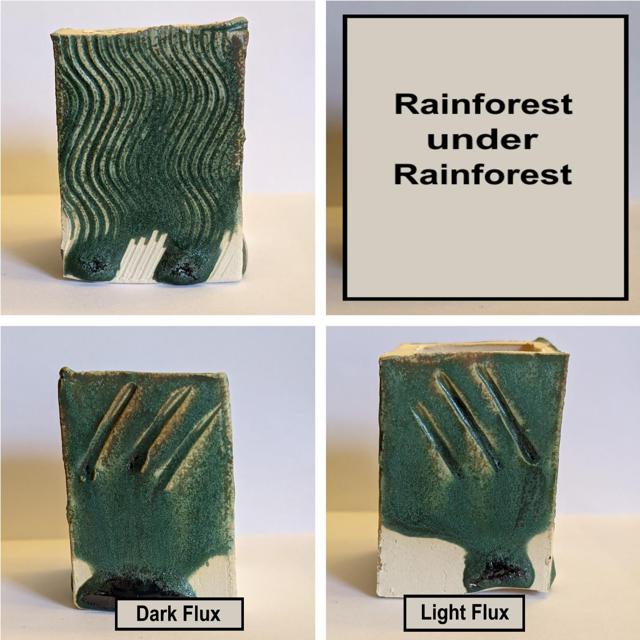
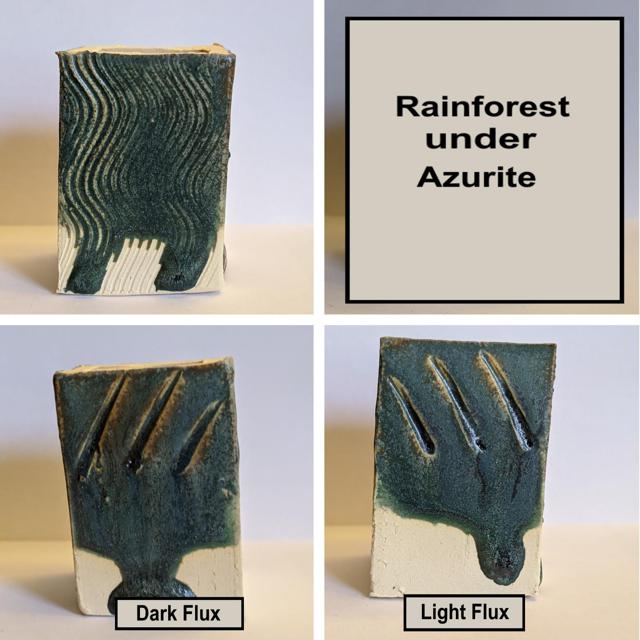
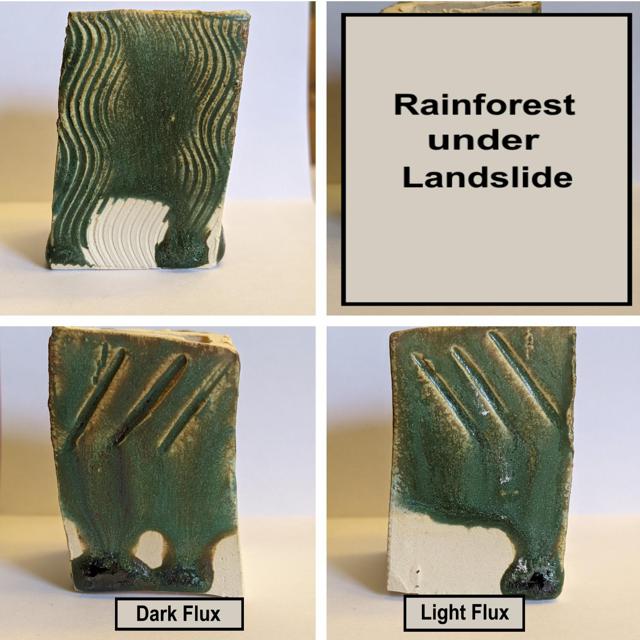
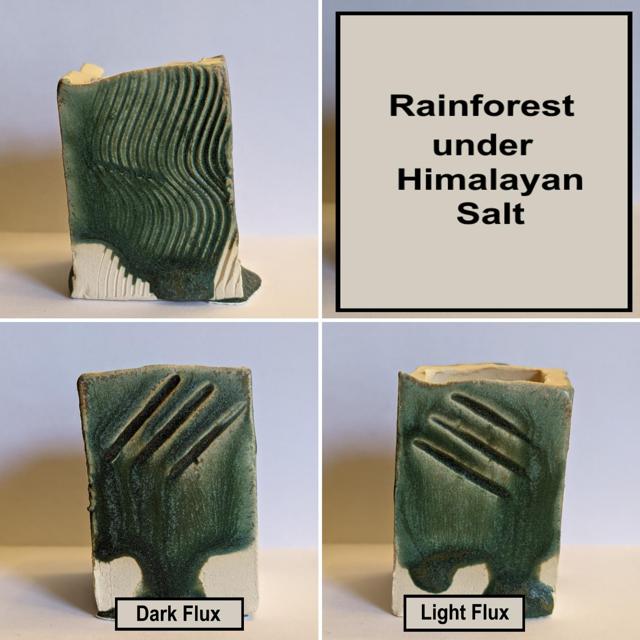
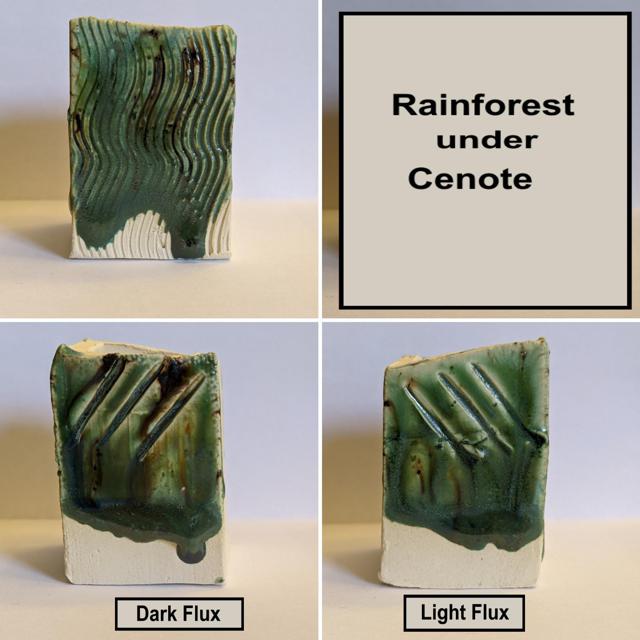
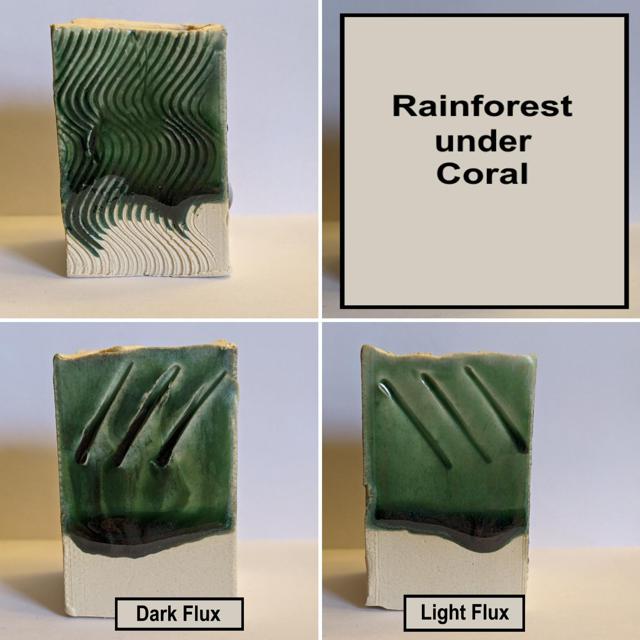
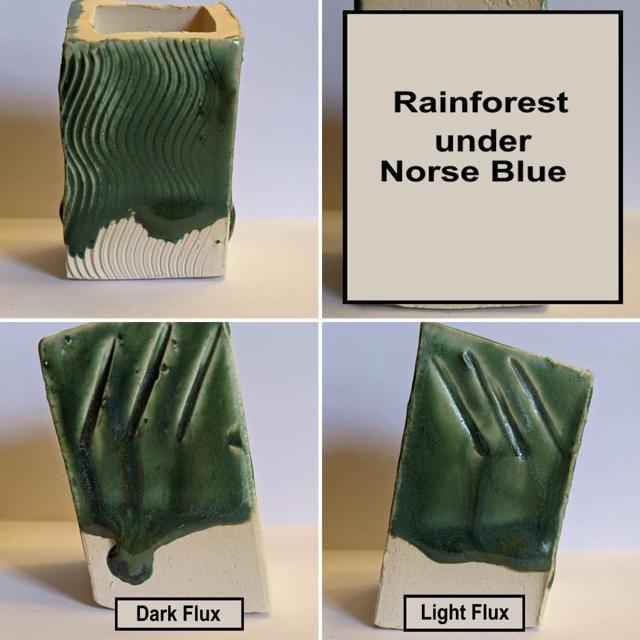
All of the tiles on this page as well as the following ones were fired in an electric Skutt kiln to cone 5 (2160°F) with a five minute hold, then a slow cool down with another hold for 30 minutes at 1900°F.
In my next post: Azurite! I hope you'll come back soon and continue reading to see what other exciting combos I've come up with!
Recent posts
- March 23, 2022 - Upcoming In-Person Shows for 2022
- Dec. 22, 2021 - Flowers on Everything
- Dec. 8, 2021 - Extruded Slab Building - Part 2
- Dec. 7, 2021 - Extruded Slab Building - Part 1
- Nov. 15, 2021 - Working Large Scale
- June 10, 2021 - Mayco Test Tiles - Two Triple Combos and a Stroke and Coat Test (Part 9/9)
- June 6, 2021 - Mayco Test Tiles - Sandstone, Muddy Waters, and Green Tea (Part 8/9)
- June 4, 2021 - Mayco Test Tiles - Norse Blue and Frosted Lemon (7/9)
- May 26, 2021 - Mayco Test Tiles - Coral and Copper Float (6/9)
- May 24, 2021 - Show Reflections
- May 19, 2021 - Mayco Test Tiles - Cenote (Part 5/9)
- May 16, 2021 - Mayco Test Tiles - Landslide (Part 4/9)
- May 7, 2021 - Mayco Test Tiles - Himalayan Salt (Part 3/9)
- May 5, 2021 - Mayco Test Tiles - Azurite (Part 2/9)
- April 19, 2021 - Upcoming Art Shows
- April 16, 2021 - The Art of Oribe - Testing a Classic
- Feb. 11, 2021 - First Blog Post - Welcome!